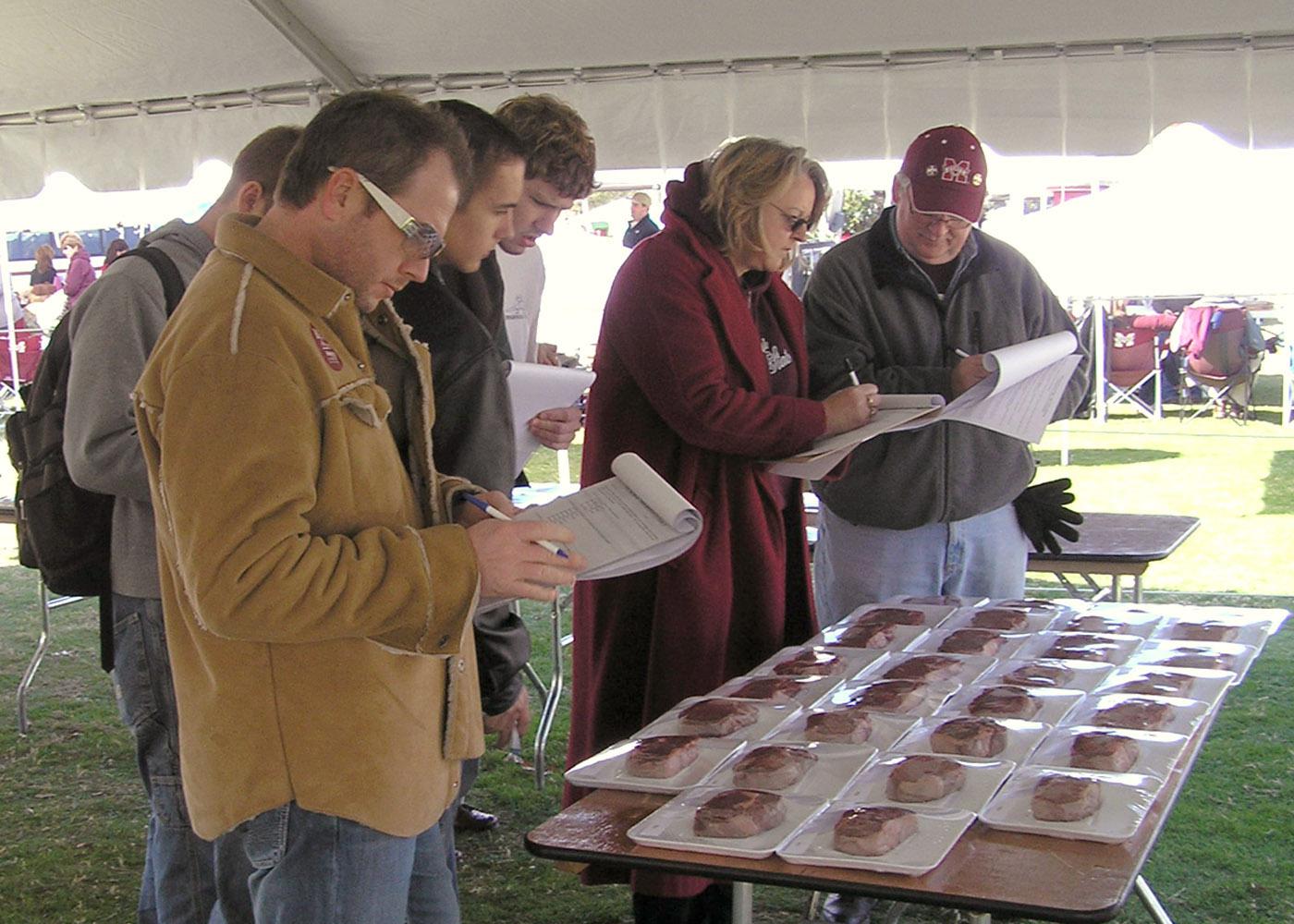Information Possibly Outdated
The information presented on this page was originally released on October 28, 2010. It may not be outdated, but please search our site for more current information. If you plan to quote or reference this information in a publication, please check with the Extension specialist or author before proceeding.
MSU researchers ask what steak eaters crave
By Justin Ammon
Mississippi Agricultural and Forestry Experiment Station
MISSISSIPPI STATE – W. Harris of Starkville takes his time when searching for steaks to feed his family. He carefully inspects the meat at the grocery store and often ends up with a pack of thin-cut New York strips.
“The strips make my family happy,” Harris said. “You can see the juice in that cut before it’s even cooked.”
Mississippi State University researchers from the Department of Food Science, Nutrition and Health Promotion, found that Harris is not the only American who considers a variety of factors when choosing a steak.
A research team, led by Mississippi Agricultural and Forestry Experiment Station assistant research professor Jason Behrends, put up a tent in MSU’s Junction while fans tailgated before a home football game. Their intention was to gauge the public’s willingness to pay extra for a thicker, heartier steak.
“It was a perfect day,” Behrends said. “It was 40 degrees: refrigeration-like temperatures. We roped an area off, started recruiting people and attracted more than 300 participants.”
Behrends, along with associate professor Mark Schilling and doctoral student Christine Leick, both in MSU’s food science, nutrition and health promotion department, and Ty Schmidt, assistant professor in the Department of Animal and Dairy Sciences, set up three tables. Each table displayed a different type of steak: ribeye, New York strip and top sirloin. The steaks were available in three categories of thickness, and each category had a different price.
The thinnest steaks were the cheapest, costing $8.99 per pound for ribeye and strip steaks and $4.99 per pound for sirloin steaks. The mid-thickness steaks were tagged at $9.99 per pound for ribeye and strip steaks and $5.99 per pound for sirloin. The thickest steaks cost $10.99 per pound for ribeye and strip steaks and $6.99 per pound for sirloin.
Participants were asked to choose three steak packages from each table. They were told that every steak, regardless of thickness, all weighed exactly the same—ribeyes and strips weighed 12 ounces, and sirloins weighed 10 ounces—and their choices should be based on price, color, marble, texture and thickness.
What most participants did not realize, however, was that every steak was cut from the same quality of carcass, which was low choice, the most common grade of grocery store steak. The only noticeable difference between the meats was in thickness.
“We wanted to look at thickness as the primary goal. We focused on that and kept everything else constant,” Behrends said. “We wanted to see if consumers would pay more for it.”
Behrends and his team found that most participants did not highly value thickness. Only 23 percent of consumers listed thickness as the most important factor of a ribeye, making it only the third most important attribute. Meanwhile, 30 percent thought that marbling was the most important attribute of ribeye, making it the most important factor of those tested.
Thickness defeated only marbling for first place with the sirloin steaks.
Less than 17 percent of participants listed price as the overriding selection factor for any steak type, though participants’ annual income ranged from $20,000 to $60,000.
When price was completely removed from consideration, consumers still did not choose the thicker steaks, which were originally marked as the most expensive in the experiment.
“We thought all consumers would pick the thick steaks. That’s what people want, right?” Behrends asked. “That was the biggest surprise to me. People still didn’t pick thick steaks even when we took price out of it.”
Some people chose thinner steaks because the larger surface area made them appear bigger, despite the fact that they were told they all weighed the same, Behrends said.
Behrends said that even if consumers are not willing to pay more for thickness, most of them are willing to pay more for characteristics such as color and marbling.
“No matter what you do, you eat with your eyes first,” he said. “When consumers select something, they are predetermining what it’s going to taste like.”
Harris, who previously worked in kitchens from New Orleans to Atlanta, said he knows how to find a steak his entire family can enjoy.
“I can’t tell you what a perfect steak is. I don’t know who can,” he said. “But I know what everyone wants: a reasonable steak with lots of flavor at a reasonable price.”
Contact: Dr. Jason Behrends, (662) 325-3200






